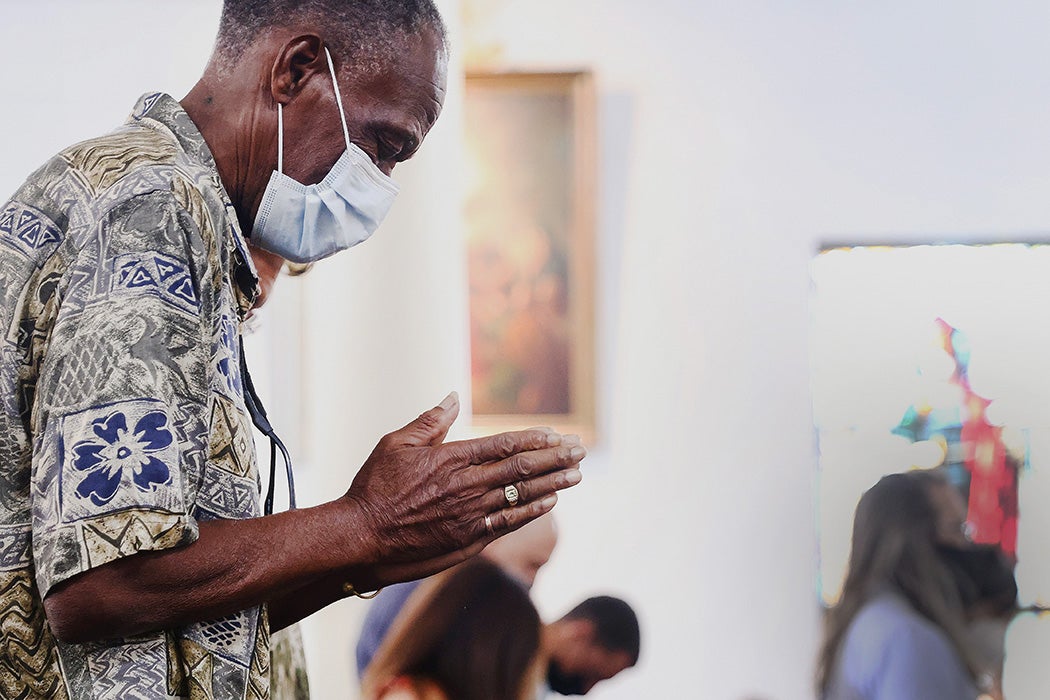Mental healthcare has not always been accessible for Black people in the United States, due to a combination of factors. Stigma, institutional racism, misdiagnoses, and financial hardship are just a few barriers to receiving treatment. Added to these is the challenge of finding culturally sensitive providers who are representative of Black American communities.
According to the American Psychiatric Association, only one in three Black Americans who need mental health care receives it. In addition, Black people with mental illnesses, particularly bipolar disorders, schizophrenia, and other psychoses, are more likely to be incarcerated than members of any other racial/ethnic group with similar conditions.
Black counselors Keith Dempsey, S. Kent Butler, and LaTrece Gaither suggest that churches could play a role in helping Black people access mental health support in their own communities.
“Historically, [the church] has functioned as a community center, social club, and training center,” they write. “The Black church has also been the place where African Americans seek emotional refuge from their daily problems.”
According to the authors, there are several reasons Black people may already turn to their churches for support instead of mental health agencies. Seeking services from churches often doesn’t impose an extra financial burden; economic hardship and inadequate insurance coverage “may force some African Americans to seek free services from paraprofessionals at their churches or forgo treatment of their mental health needs altogether.”
For others, “seeking professional help for emotional problems is a sign of spiritual flaws in one’s life.” Drawing on their faith to improve their emotional well-being may be their first choice. In addition, turning to a mental health agency may “produce strong feelings of shame and guilt,” leading people to rely solely on the church. And many have prior relationships with their churches and feel more welcome there than in a clinical environment.
Finally, what the authors describe as a “lack of ethnic matching” in the mental health industry presents a significant obstacle to treatment. There is a limited number of Black clinicians, and “mental health agencies that do not have a diverse ethnic representation struggle to understand the client’s worldview or life experiences.”
While the church may be the first—or only—resource to which some Black Americans turn, the authors note that receiving counseling solely from clergy may be counterproductive if a mental health issue doesn’t align with a church’s values. For example, “historically the Black church has taken a strong stance on heterosexual relationships and abstaining from sexual activity before marriage, causing some clergy to resist exploring issues such as sexuality and sexual promiscuity.”
Where clergy may be inclined to “correct” values or behaviors that contradict the church’s teaching and use the teachings of the Bible to guide parishioners, “mental health professionals are trained to listen without judgment.”
The authors noted that this doesn’t need to be an “either/or” situation, pointing out that “Black churches and outside agencies have benefited from several successful collaborations.” The most notable collaborations have been related to physical health and wellness, but the model could be built upon to provide mental healthcare as well.
The most important part of the solution requires that healthcare agencies have permission to work with Black churches from their clergy and that they take the time to become a part of the community. “Establishing a trusting relationship provide[s] a foundation for continued conversation,” write the authors.
Weekly Newsletter
“Mental health professionals have better success when they respectfully become an active member of the community they serve,” observe the authors. Healthcare workers should use “culturally appropriate outreach methods within the contexts of the Black church’s existing system.” Joining the community and “holding meetings in Black churches rather than respective agencies and institutions signifies a partnership as well as a physical presence.”
Beyond that, clergy could receive mental health training, and more research could be conducted to determine what other methods could best support Black churchgoers.
Dempsey, Butler, and Gaither hope that these collaborations better support Black Americans, as untreated mental illnesses in their communities continues to grow “at an alarming rate.”







